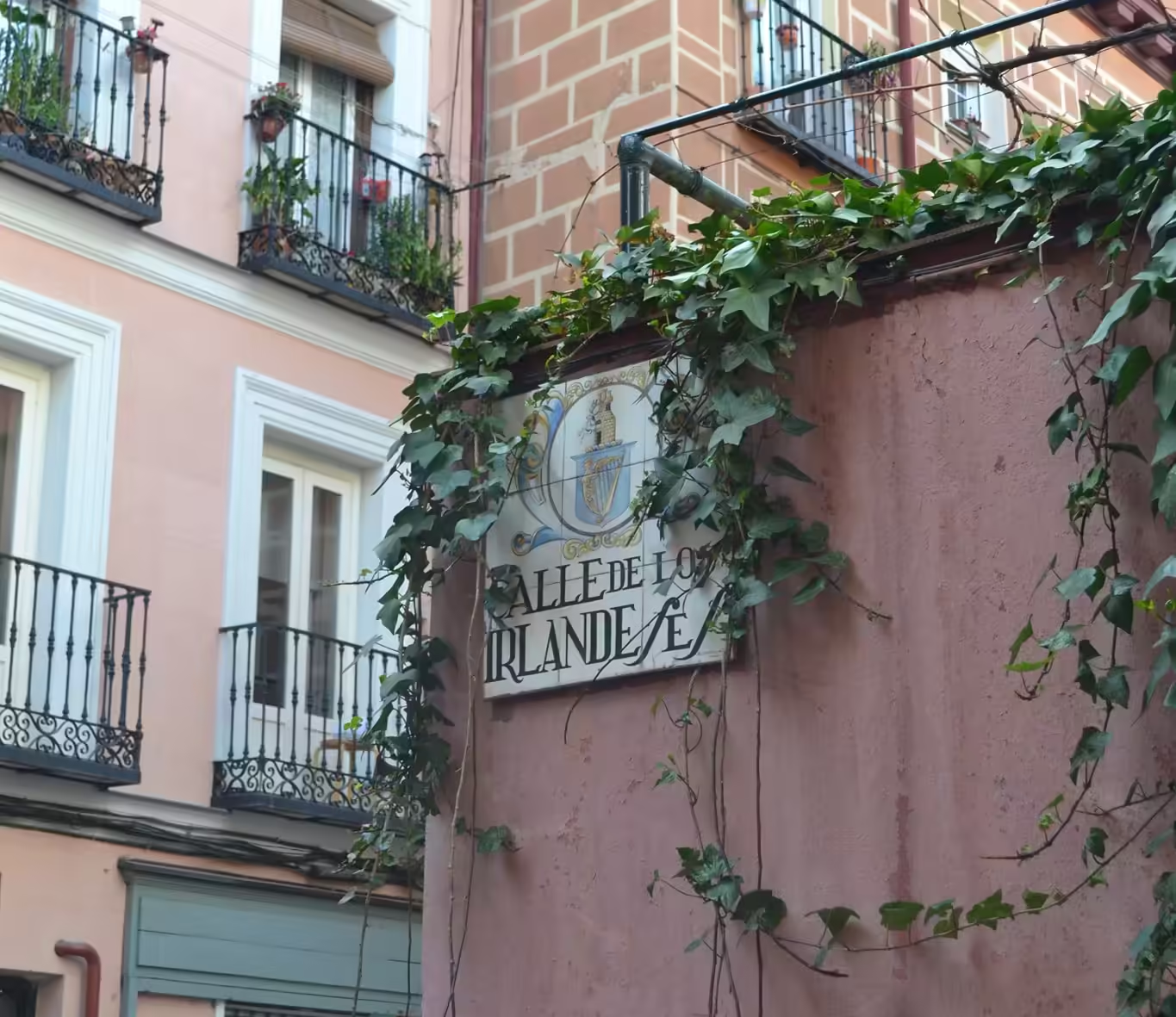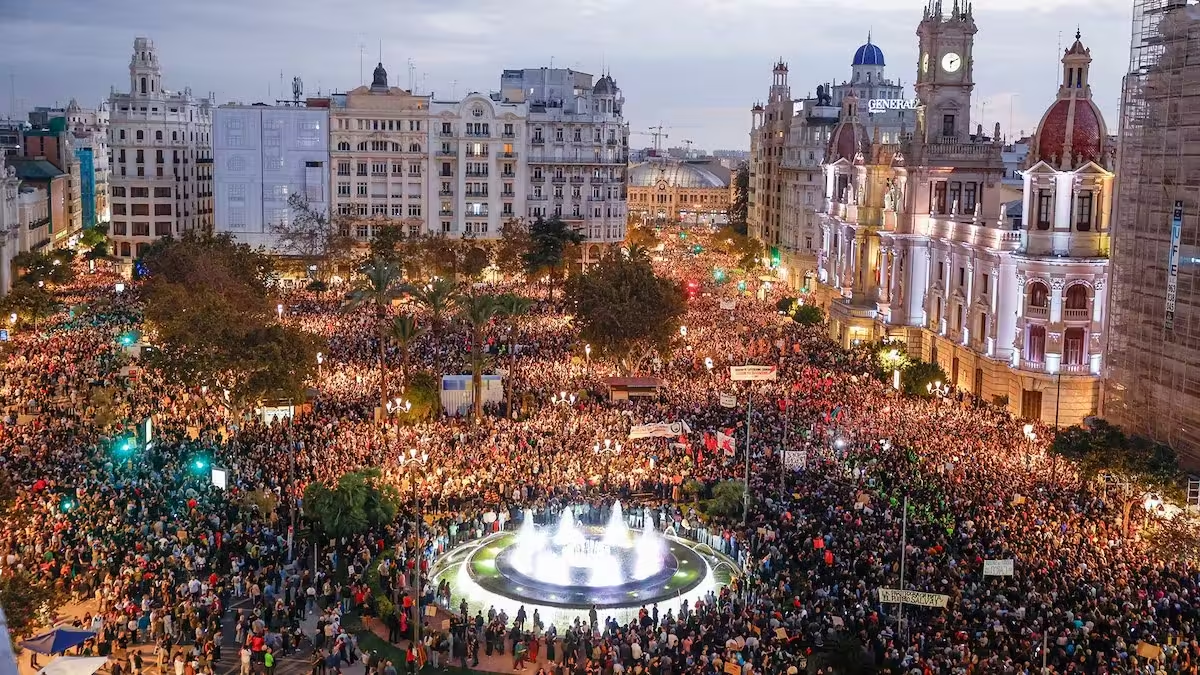The Irish in Spain: A beautiful, unknown story
‘He didn’t believe it. He refuses to believe it.’
Our friend Bárbara has just sent us an audio message on WhatsApp. Her father, an elderly Spanish man, and retired lawyer, a man of culture and education, cannot fathom that Ireland and Spain are so closely linked.
We’ve had beautiful experiences meeting people of other nationalities who know and celebrate their links with Ireland, with many Spaniards making up that number. But it is true that the reaction of our friend’s father is not uncommon.
What could we do? We sent back an audio to Bárbara, presenting the evidence. ‘Exhibit A starts with some legend….’
An Emigrant’s Tale
Medieval monks in Ireland, jealous of the great sagas from Greece and Rome, set about writing Ireland’s own creation myth. The Lebor Gabála Érenn (Book of Invasions) was the result. In its pages, we can read that the Gaels descended from Noah, and after the flood they eventually made their way to Iberia and built a tower from where they spotted Ireland. They then set sail and took over the island, naming Ireland after a goddess living there. (Curiously, there is a similarity in the names of Hibernia and Iberia.) Nowadays,
there is a park in Madrid named after Breogán, near Avenida de América, which helps keep this story alive.
Moving from myth to history, we have many seams to mine. We ran a walking tour for a long time about the Irish in Spain, which is where we met Barbara. Irish people fled the Elizabethan conquest of their Ireland and sought refuge in the Spain of Felipe II and, later, Felipe III. Despite the common idea of Irish
immigrants back then being only priests or soldiers, many were entrepreneurial. Edward Crean, one successful Irishman, even started helping the king reform Spain’s tax system, and he cultivated close links with Irish bankers around the country. Others were ambassadors, representing Spain in delicate negotiations with enemy nations like the Netherlands.
Nevertheless, many of these refugees arrived half-starved (even the gentry). The Spanish Court wanted to rid of them, but the Irish stayed. At first, the language was a barrier, and they grouped together in ghettos. But by the second and third generations, integration had been achieved and many rose to prominent positions. One became an official doctor to the king and is buried in a church in the centre of Madrid. John Downing, meanwhile, worked with Spanish spies to build industrial machines for the king.
And spare a thought for the men who lived in the Irish College in the Spanish capital. They were denied mutton and wine in their diets, and their building faced a rowdy street laden with bars and drunken altercations. Then there are the characters that preserve these links in surprising ways. Countess Lola Montez, a beautiful Limerick woman, pretended to be Spanish and danced her way through Europe, gaining lovers, power, and notoriety as she went. She fled to Cadiz after eloping as a teen and embarking on a failed marriage.
Or how about Francisco de Cuéllar, who washed up on an Irish beach and relied on the locals to evade capture by the British. As he tried to survive, he tasted beer for the first time and read the palms of noble ladies so he would win their favour. After many literal and figurative battles, he found a way home. But the poor man suffered another shipwreck on route to Spain.
Or the Irish students in Salamanca who introduced football to the country? Without them, there wouldn’t be any trophy lifts at the iconic Cibeles fountain.
Seamus Heaney in Madrid
Yet despite all the intrigue and flavour of the above, it is Seamus Heaney that has always grabbed our attention the most.
Our novel, Verano, 1969, takes a look at a little-known but amazing episode in Madrid’s history: the arrival of the future Nobel Laureate Seamus Heaney to the Spanish capital. The great writer was unknown then outside of the English-speaking world. But in the present day, with his name charged with international renown, it is surprising that more people are not aware of the moment when an Irish literary giant intersected with Madrid neighbourhoods and Spanish history.
Heaney stayed in Lavapiés when he was here. Our characters carry their dreams and burdens through this historic barrio, as well as Atocha, Cuesta de Moyano (incidentally, now a UNESCO site), and the surroundings that make up the patchwork that is Madrid’s centre.
His Madrid is our Madrid. Like us, he battled the heat and walked unknowingly around the corridors of the Prado – one of Europe’s premier art galleries. He was struck dumb by seeing Goya’s Saturn Devouring His Son.
Characters of Verano, 1969
Heaney wrote a poem about his time in the Spanish capital. The poem allowed Heaney to explore the commonalities between both nations (not least the similar feelings generated by the incipient Troubles and the student protests happening around Spain), while also marvelling at the new and the exotic.
The poem also gave us a structure. A line from his poem gives us the title of each chapter, which taken together form ten interlinking stories and characters, with Heaney’s presence felt throughout.
We have re-imagined his experiences and given life to a cast of characters that, like the city itself, are opening up to the outside, pulling at their limits, and figuring out their place in the world. Madrid is the stunning backdrop as people vibrate and convulse with existential questions.
The first person we meet is Dolores, who is spending time in a women’s prison for an unspecified crime. Soon, she will be forced to move because the building will be destroyed. The landscape of the city is changing as much as the interior world of our protagonists.
Other characters try to solve their own problems, from the old woman in mourning to the angry runaway and the uncle who is sent out to find him, and from drunken barflies to the young couple eager to experience new things. Miguel, a translator grapples with how to translate the rural scenes written by a Derry native.
The modern experience
In Madrid nowadays, and in many European cities, it is Beckett and Joyce, rather than Heaney, who stare back from bookshelves.
But the Hiberno-Spanish links are ever-present.
There is a little street called Calle de los Irlandeses in the La Latina neighbourhood, on the corner of the Irish college we cover in our tour. A leprechaun wearing a Guinness hat, placed above the street sign, gives a dash of colour to an otherwise drab alleyway lined with apartments. Not too far away, the Teatro Circo Price bears the name of the Irishman who founded the circus that once stood there.
Groups of Irish speakers huddle together in bars and cafes to speak Irish, reclaiming their native tongue, a beautiful language that makes itself known at unexpected times. We once heard it randomly at a party as it came out of the mouth of a bookish Spaniard. To make it even more international, it was at a celebration of Sinterklaas.
Then there’s us, Ybernia. Apart from the tours mentioned above, we have a podcast where we often interview people that bridge that space over the Atlantic between Ireland and Spain. In our guise as publishers and writers, we publish books that do much the same, while hosting Bloomsday celebrations and cultural evenings imbued with the green and red tinge of both nations.
And irrespective of the location or forum, we are always ready to answer ‘yes, really’ with a smile to anyone surprised by Ireland and Spain’s shared and deep connection.
Thank you to Ybernia for sharing their unique insights into the deep connections between Ireland and Spain.
Discover more about Ybernia, a one-stop bilingual publishing house offering expert translation, proofreading, editing, and publishing services in both English and Spanish. Visit their website, explore their online shop, and follow them on social media for insights into their work, their latest books, and how they bridge the Irish and Spanish cultures.
Explore their online book store: Click here
Main image: Facebook/Ybernia
Share this content:




9 comments